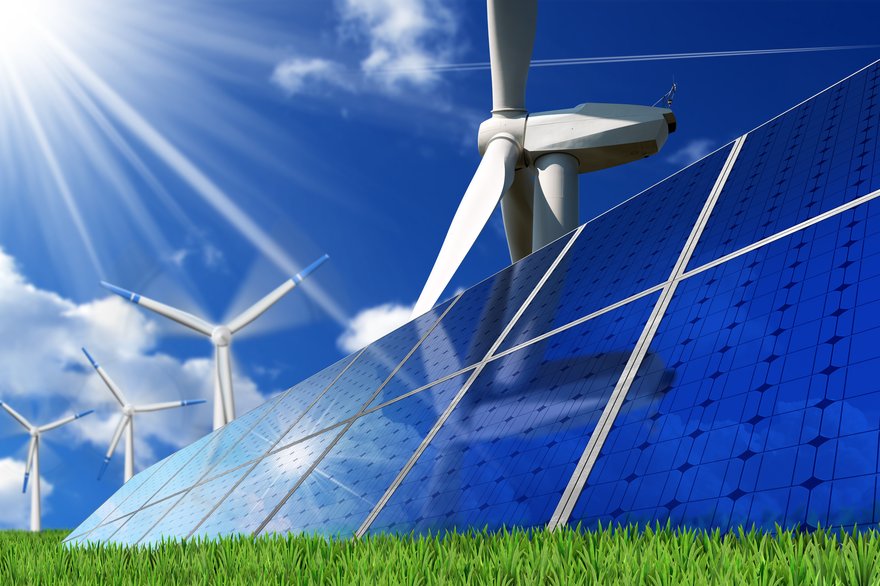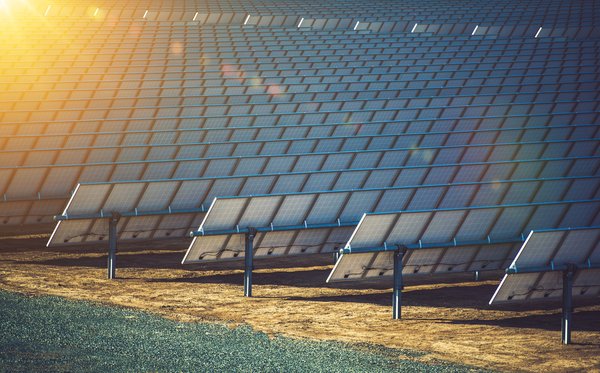
The United States is in the midst of a clean energy transition driven by a shift toward renewable energy, such as wind and solar, at the expense of fossil fuels.
Since August 2022, $271 billion worth of investment in clean energy has been announced in the U.S., more than all clean energy investment in the U.S. from 2015 to 2022, according to the American Clean Power Association. The Inflation Reduction Act, which included powerful incentives for clean and renewable energy projects, has played a significant role in boosting investment.
There’s still a long way to go. In 2022, 79% of the energy generated in the U.S. came from fossil fuels, while just 13% came from renewable sources. The remaining 8% was generated by nuclear energy. By 2050, the Department of Energy projects that fossil fuels will compose 57% of U.S. energy production, while renewables will make up about 25%.
Read on for a look at the fastest-growing energy sources.
Key findings
- The U.S. generates 79% of its energy from fossil fuels, 13% from renewables, and 8% from nuclear.
- By 2050, the U.S. is projected to generate 69% of its energy from fossil fuels, 25% from renewables, and 5% from nuclear
- By 2050, energy production from fossil fuels is projected to drop 11%, led by a 57% decrease in power from coal. Renewable energy production is projected to grow by 101%, led by wind and solar.
The fastest-growing energy sources: 1949-2022
Three trends have defined energy production and consumption in the U.S. during the past 70 years:
- A decline in fossil fuels led by a significant reduction in coal power.
- A significant increase in the use of natural gas to generate energy.
- The slow but steady rise of renewable energy.
From 1949 to 2022, the share of U.S. energy generation from fossil fuels fell from 91% to 79%, and energy consumption from fossil fuels experienced a similar decline. Over the same time, the share of energy production from coal fell from 39% to 12%, and consumption dropped from 38% to 10%.
The opposite occurred with regard to natural gas. The fracking boom has led to natural gas doubling its share of energy consumption and production from just over 15% in 1949 to around 35% in 2022.
Renewable energy has experienced slower growth. Renewables made up 9% of U.S. energy consumption and production in 1949 and have grown roughly 40% to comprise around 13% of consumption and generation in 2022. Wind and solar energy have contributed the most to that growth, while hydroelectric power generation and consumption have declined.
Renewable energy took up a larger portion of overall U.S. energy consumption than coal starting in 2019.
Projected energy consumption by energy source
Renewable energy consumption in the U.S. will be nearly on par with natural gas consumption by 2050, according to projections from the Energy Information Administration (EIA), a government agency that collects and analyzes energy information.
Renewables are projected to account for 27% of U.S. energy consumption by mid-century, while fossil fuels will make up 66%. The remaining 7% is projected to be filled by nuclear power, which will make up a declining share of U.S. energy consumption over the next 30 years.
Although those projections may be a letdown for environmentalists, there is some good news. Coal power, among the most environmentally harmful forms of energy generation, is estimated to make up just 3% of U.S. energy consumption by 2050.
However, natural gas and oil are expected to stick around, comprising 34% and 29% of U.S. energy consumption by 2050, respectively.
Wind and solar power will be responsible for the continuing green energy transition, while biomass, hydropower, and nuclear energy are all projected to make up a smaller share of U.S. energy consumption in 2050 compared to 2022.
Globally, renewables are expected to surpass coal as the largest source of electricity generation by 2025, according to the International Energy Agency (IEA). Wind and solar will lead the transition.
In the U.S., the IEA projects that wind and solar capacity will double in 2027 compared to 2021.
How to invest in the fastest-growing energy sources
The green energy transition is underway in the U.S. and around the world. Billions in investments pour into clean energy capacity every year.
Innovation, capital, and the fundamental need for more energy can make the sector seem lucrative for many investors.
But it’s a crowded space filled with aspirational companies claiming to be on the verge of game-changing technology as well as mainstays with decades of experience. Adding another layer of complexity, many energy stocks are at the mercy of sometimes volatile energy prices.
To cut through the noise, The Motley Fool has put together a guide to jumpstart investing in energy stocks including an overview of the entire sector to industry-specific ideas.
The energy sector will continue to undergo significant changes over the coming years, so stay tuned.
Sources
- American Clean Power Association (2023). “Clean Energy Investing In America: Report.”
- International Energy Agency (2022). “Renewables 2022.”
- U.S. Energy Information Agency (2023). “Monthly Energy Review.”
The Motley Fool has a disclosure policy.


























































